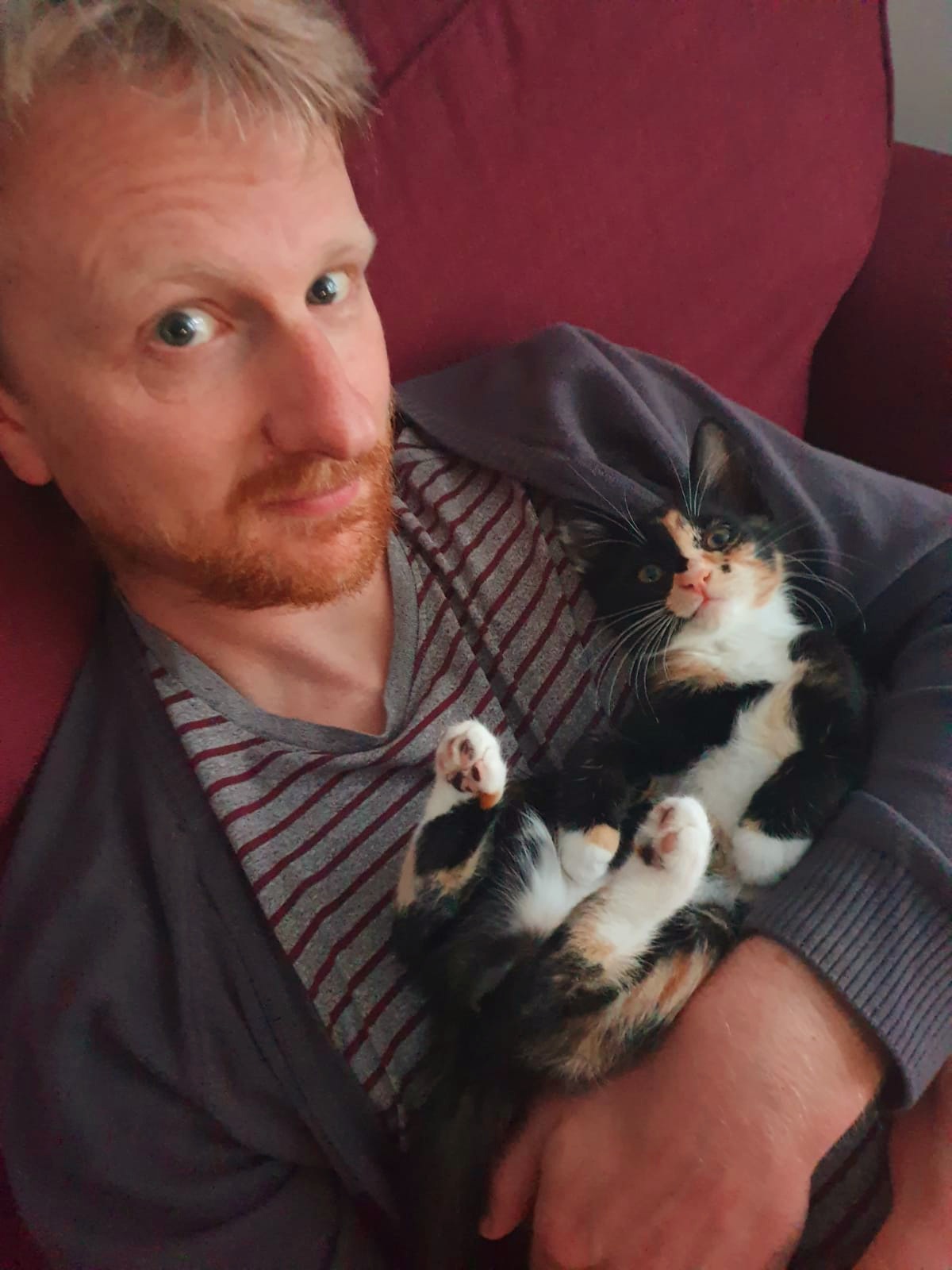Best pet food containers 2025: Keep kibble fresh and tasty
The best pet food containers will keep dry pet food fresh for longer, while also making feeding times easier.
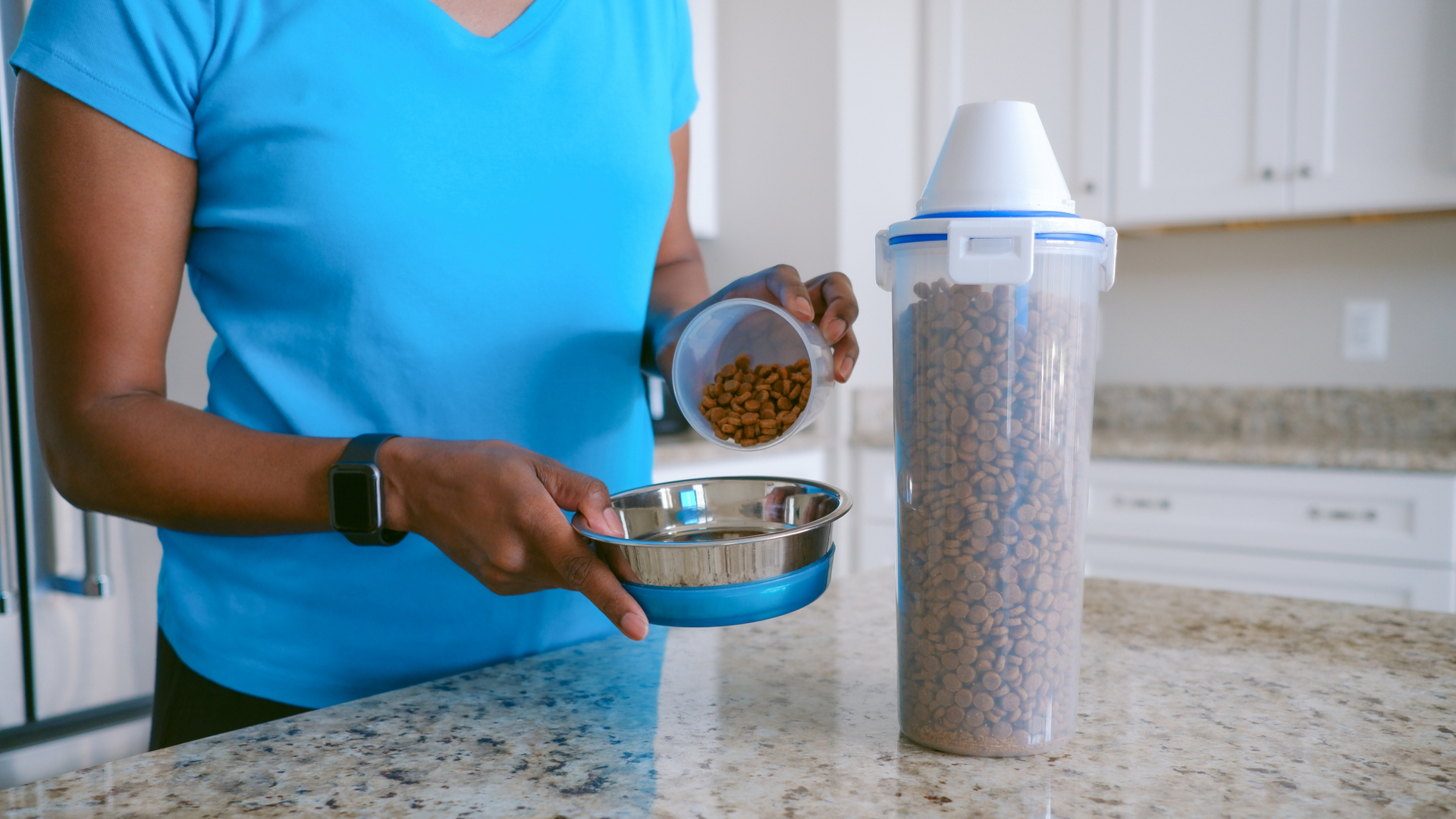
Pet food can be very expensive these days, so it’s important to keep it stored properly with the best pet food containers. Airtight containers can extend the life of your pet’s food, keeping it from going stale and saving you money in the long run.
Whatever size or shape you need, there are some excellent storage options out there. Larger tubs to store the best dry dog food, smaller options for the best dry cat food, portable containers on wheels, and plenty that come with convenient food scoops to help you portion out meals.
There are other benefits to pet food containers too — decanting a big, bulky bag of kibble into a sturdy, stackable box makes it much easier to store away in the cupboard. This makes feeding time a lot easier, as you can simply lift up the tub, scoop out the kibble, and slot it back onto the shelf. No more fighting with cumbersome bags and food bag clips that refuse to stay attached.
You can also store your pet food container next to the best automatic pet feeders, making the process of reloading these clever gadgets even easier.
The best pet food containers 2024
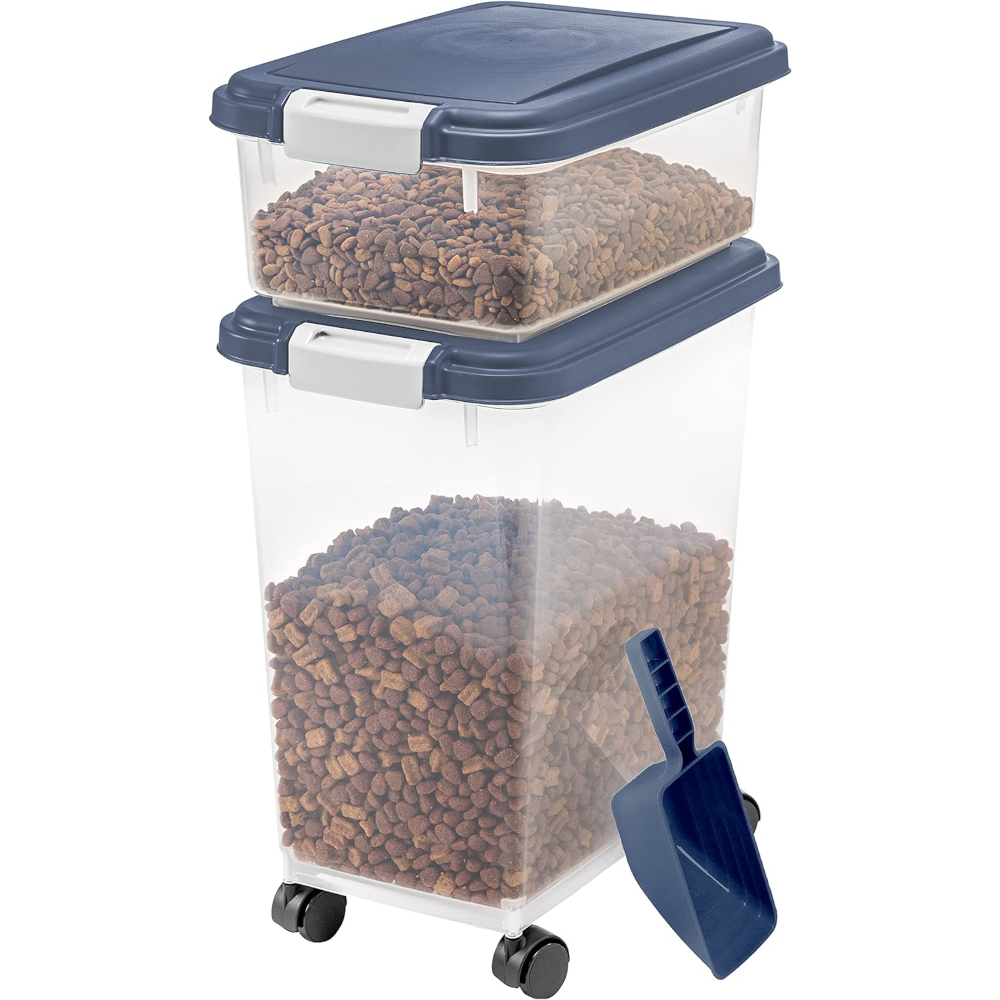
Best overall pet food container
This versatile storage box combo is our favorite all-rounder choice if you need pet food storage. It comes with both a large 30 lb container, and a second 11 lb container that stacks neatly on top (there is also a 25 lb / 10 lb combo out there too). This means you can store two different types of food at once — perfect for multi-pet households, or if you like to mix different kibbles together. The larger container is also mounted on detachable wheels for easier movement.
The containers are made of strong food-safe, BPA-free plastic, with airtight hinged lids and snap-lock latches to keep the food fresh and your pets out. This set only comes with one scoop, so you may want to consider getting another to prevent food cross-contamination.
Overall, the IRIS airtight container and scoop combo is practical, space-saving, and robust, and it comes in 5 colors options too, so you are bound to find one to match your home's décor.
But it if: You need versatile storage
Don’t buy it if: You don’t need two containers
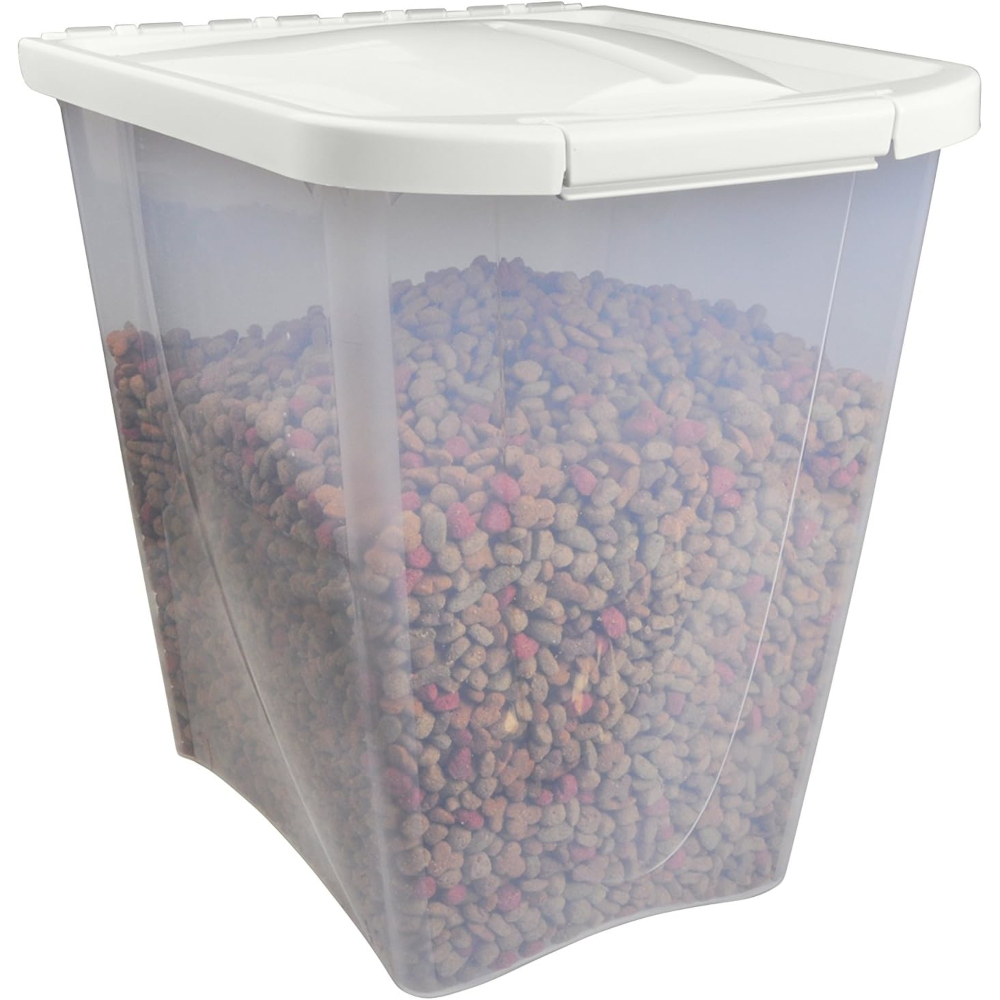
Best budget pet food container
If you’re looking to keep spending down, you’ll struggle to find better value for money than Van Ness’s range of budget storage boxes. They come in a range of sizes from tiny 5lb boxes up to gargantuan 50 lb tubs, but they all follow the same basic design. We’d recommend shooting down the middle and getting a 25 lb container for most pet food storage needs.
The larger Van Ness containers (25lb and 50lb) have wheels mounted into the underside for easier movement, while still being stackable, which is a nice touch. The airtight lid opens right up from the front with an easy catch mechanism, exposing a large area from which to scoop your dog’s kibble.
The plastic that Van Ness uses has been approved as safe by the US Food and Drug Administration, so you know it won’t leak harmful chemicals or colorants into your dog’s food.
But it if: You want a budget option
Don’t buy it if: You care about aesthetics (they’re kinda ugly)
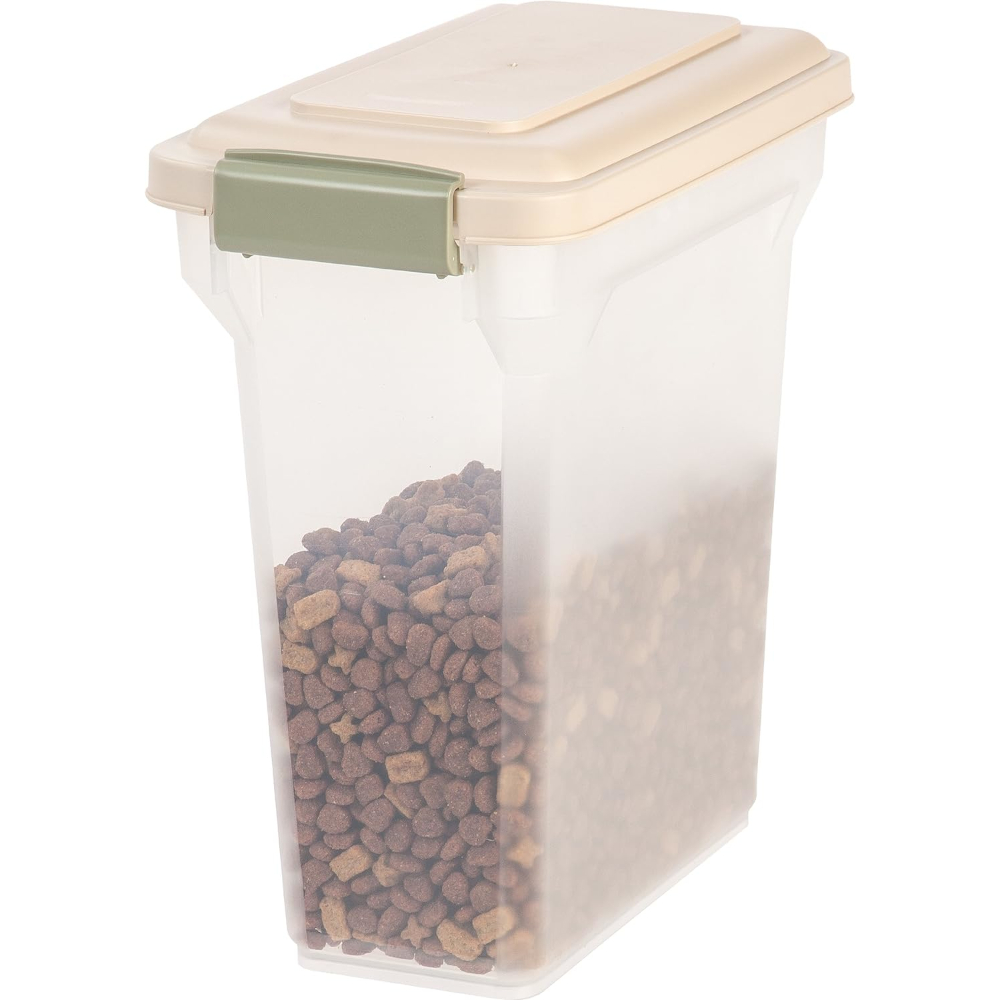
Best pet food container for cats
Cat’s are smaller and eat less than dogs, so a smaller container is perfect for storing cat food. This 13lb option from IRIS is as small and compact as a cereal box, making it easy to store away in a cupboard. It’s made out of safe, BPA-free plastic, and is sturdy enough to withstand being dropped, should you trip over kitty during feeding time.
The lid is airtight and fits the tub well. It has a handy clip that allows you to lift off the lid and break the seal, giving you a large area for either scooping or pouring food directly into your waiting cat’s bowl. It doesn’t come with a scoop though, so you’ll need to buy one separately.
It comes in two color options, and at around $18 it’s not too expensive either. Fair warning though, it has a distinct smell of plastic when new, so we recommend thorough washing before putting any food in there.
But it if: You have a cat or small dog.
Don’t buy it if: You need a large storage solution.
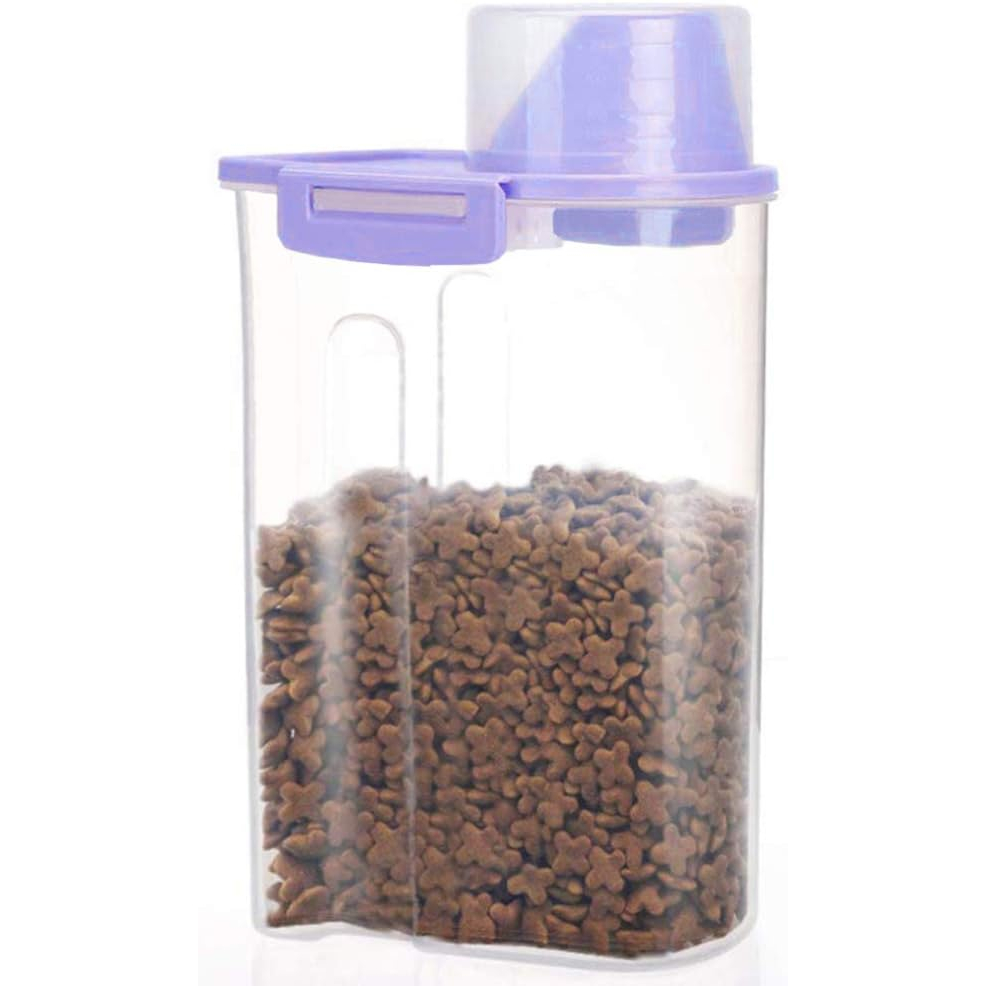
Best pet food container for measured diets
If your pet is on medication you’ll know how tough it can be to regulate their diet. The Pission pet food container with measuring cup helps with this, as the integrated feeding cup helps you measure the exact amount of kibble your cat or dog is getting.
It’s made of safe, recyclable plastic, and it is airtight when you’ve clipped the lid on. The measuring cup sits on the top of the lid, and fits nicely, so it won’t rattle or fall off when you store it. We like the shape of the container too, as it has grooves at the rear, making it easier to grip when you’re pouring food into a bowl or the cup.
It comes in a variety of colors and it’s well priced too. The only downside is that it’s considerably smaller than the other options on our list, so it won’t fit as much kibble, so expect more regular refills.
But it if: You pet needs a precise diet
Don’t buy it if: You need a large storage solution.
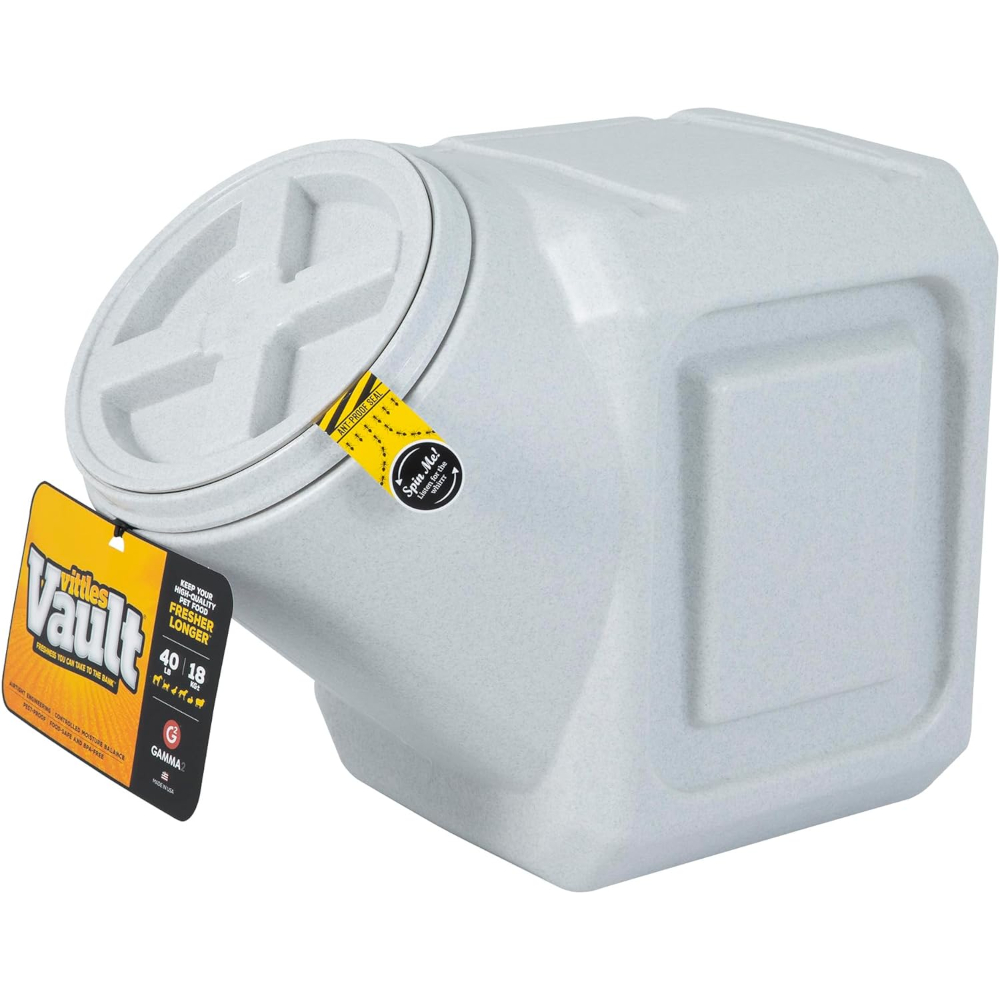
Best outdoors pet food container
This rugged storage container is tough enough to be stored outdoors. The circular, screw-top lid offers an airtight seal, keeping moisture and the elements out of your pet’s precious food supply. The plastic is BPA free, and is FDA approved, so you know it won’t degrade and leak any harmful chemicals into pooch’s kibble.
You can also stack several of these containers if required, making it ideal for multi-pet households where you need to store multiple food types. With options for a 40 or 60 lb capacity, these containers aren’t going to be easy to move when full of kibble though — this is a container you leave in place and bring the bowl to it at feeding time.
There aren’t any color options to choose from, and we’d describe the styling as “utilitarian” if we’re being generous, but we can’t deny that it does the job it sets out to do perfectly.
But it if: You need outdoor pet food storage
Don’t buy it if: You need something portable
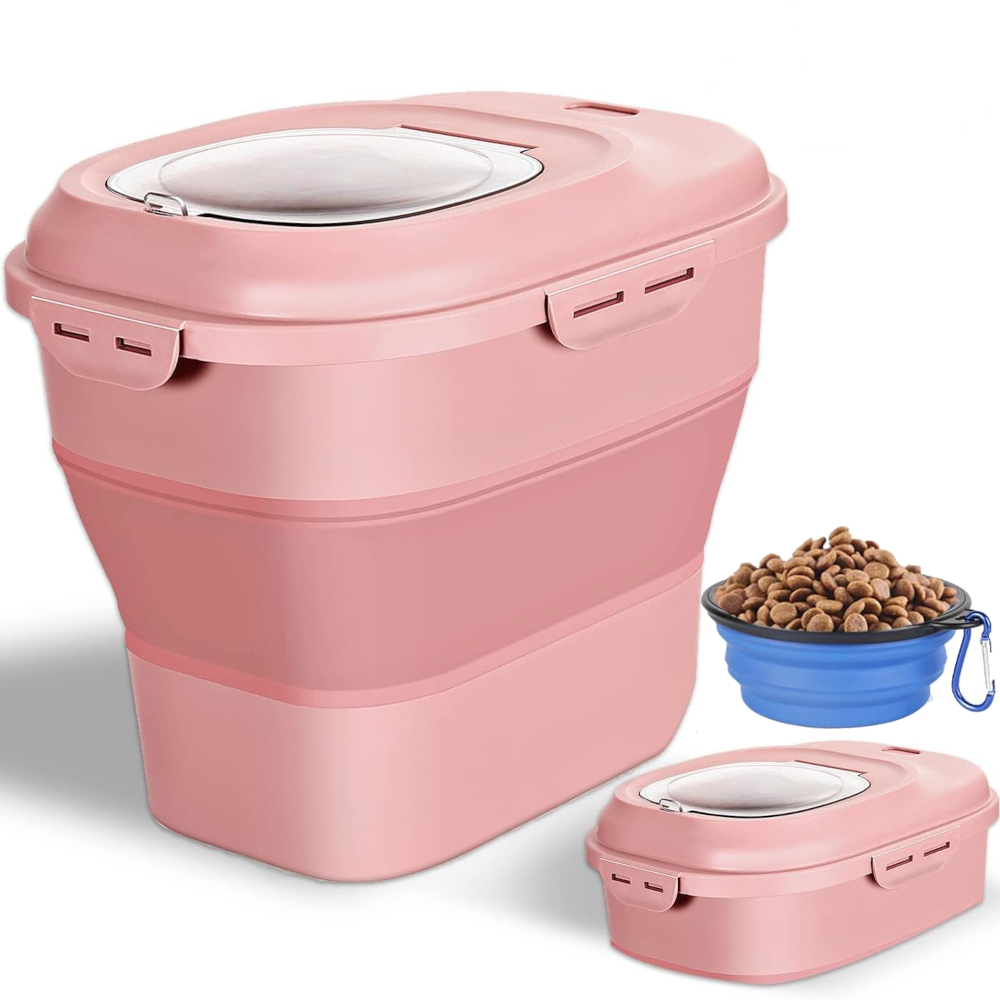
Best versatile pet food container
There’s no point in having a large container if you don’t have much food inside it. Likewise, it’s pointless having a small container if you have a big bag of kibble to decant. This collapsible container offers the perfect solution, as you can adjust the size to meet your needs on the fly.
With this container, you can go large or small thanks to a folding material which just requires you to push or pull. In either case, you can fit a secure lid which comes with an easy-access door. This is air-tight to prevent food from drying out, allowing you to store as much as 30lbs of food without worry.
The container is available in three color options and also comes with a scoop. It’s made from BPA-free plastic that is non-toxic. You don’t need to fret about the container becoming heavy either, as there are wheels on the bottom for easy moving. It’s about as versatile and well-thought out as a container can be, though you’re paying a premium for that clever design.
But it if: You need flexible storage
Don’t buy it if: You want a cheap option
How to choose the best pet food container
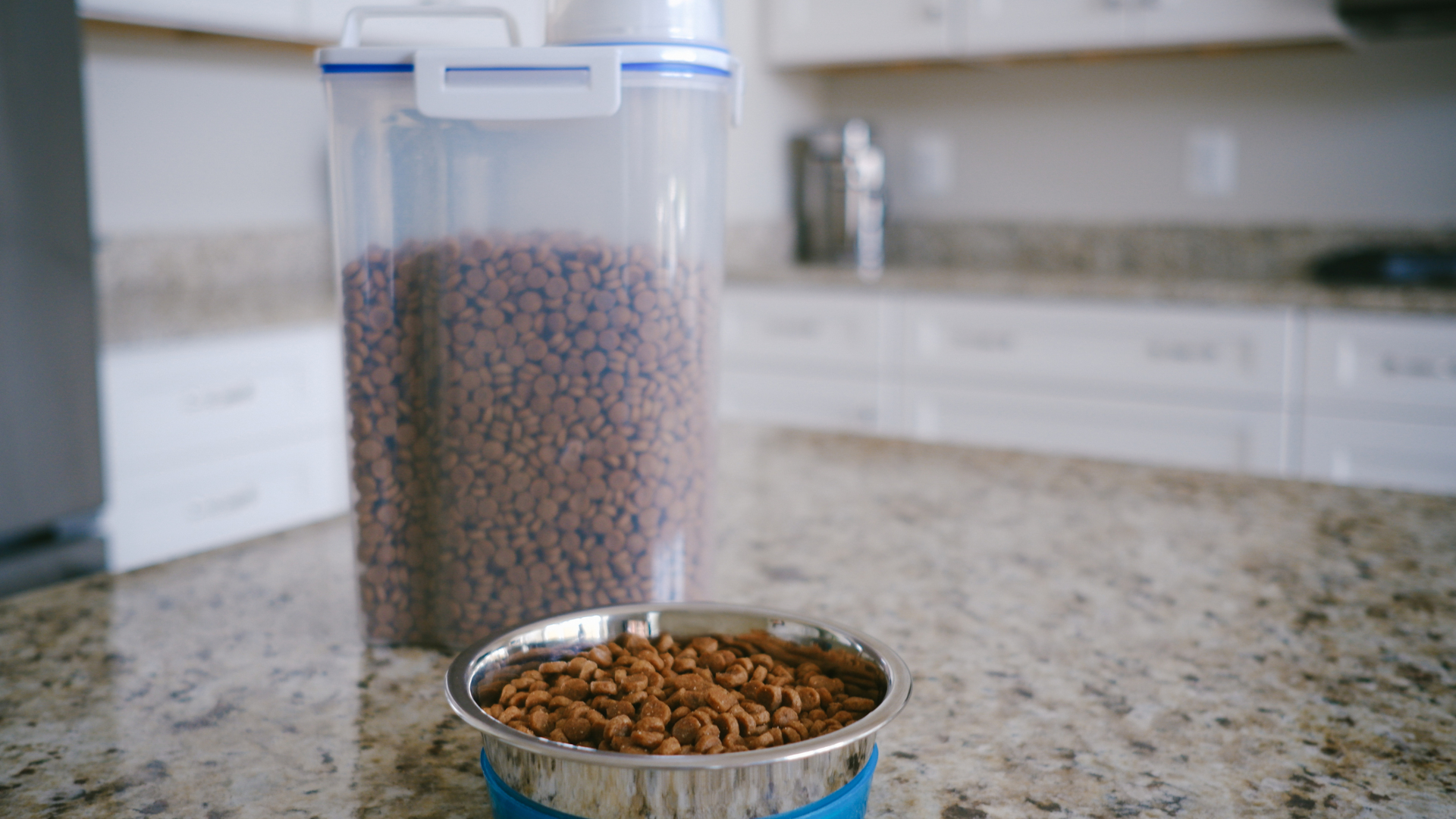
Selecting the best pet food container really comes down to the space you’re working with, and the pet you have. Smaller spaces and smaller pets will require less space, but you may want something a little larger so that you can store several months’ worth of food in a single place. Equally, larger pets may require more food, so you should look for a pet food container that's big and stackable, unless space really isn’t an issue. Certain pet food containers can be stored outside but you need to be confident that they are sturdy enough to withstand the elements, and their airtight seal is strong enough to not degrade quickly.
In terms of materials, we would always suggest plastic, and always recommend that you check it is PBA-free and comes with some kind of assurance from a government agency. While you’re unlikely to get chemicals leaking into your pet’s food, it just isn’t worth the risk, and while you may save a few bucks on a cheaper container… you’ll spend big when it comes to veterinarian bills if your dog or cat does get sick.
If you want metal, always make sure that you’re storing it in a cool, dry area (because few come with airtight seals) and that you get a steel container with no harmful chemicals or elements that can rust. Rusted iron or lead in your pet’s food really, really isn’t good for them. Metal bins are often more attractive and expensive, so be sure they suit your practical needs when you buy one.
Does dry pet food need to be kept in airtight containers?
Pet food is just like human food — it needs to be stored properly in order to extend its life. As our expert vet Dr. Hannah Godfrey explains, “keeping dry food in sealable Tupperware or similar will help to keep it fresh and more palatable and prevent contamination from bacteria or molds, meaning it will last longer.”
Tupperware, or other airtight containers, also keep out air and moisture that would cause the food to spoil quicker. On top of this, they keep out bugs called storage mites, which Dr Godfrey warns can cause problems if your pet is allergic.
“Storage mite allergies can cause your pet to have itchy and irritated skin, recurring ear infections, hair loss, and other symptoms” warns Dr Godfrey. Prevention is the best cure here, so she advises you “avoid their exposure by storing dry food in an airtight, sealed container, somewhere cool.”
Finally, Dr Godfrey has a handy tip to preserve pet food for longer — portion your dog’s food into separate containers for each week, so that you’re not exposing the entire volume of food to the air at every meal time. This should keep the later half of the kibble bag tasting almost as fresh as the first bowl.
Airtight containers aren’t a magic preservative solution though. Pet food will go bad eventually, even if properly stored, so be sure to check the best before dates on the packaging. You should always store pet food in a cool, dry place, regardless of what container you’re using to hold it.
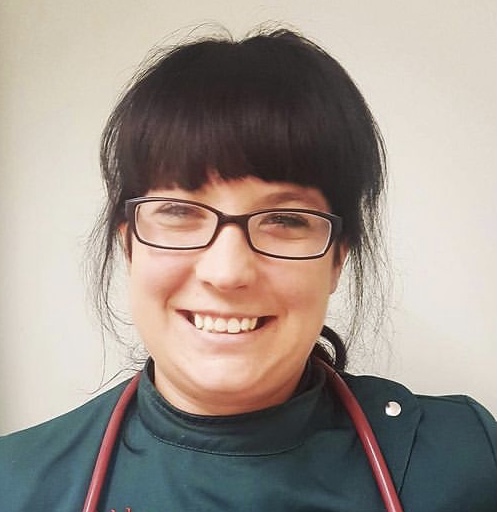
Dr Hannah Godfrey studied Veterinary Medicine at the Royal Veterinary College London. After graduating in 2011, Dr Godfrey went on to become a veterinary surgeon, conducting surgery consultations on a range of animals at a small independent practice in Cardiff, South Wales, UK. Dr Godfrey has a strong interest in soft tissue surgery. When she’s not helping animals back on their feet, Dr Godfrey writes a number of veterinary and animal-focussed articles.
Get the best advice, tips and top tech for your beloved Pets
Andy is an online Editor-in-Chief, a photographer, and a cat owner of 25 years. He has owned many types of cat, rescuing some and adopting others from kittens. He currently lives with Pickle, a tortie, who loves to play with Christmas wrapping bows and eat flowers.
- Ian StokesFreelance writer
